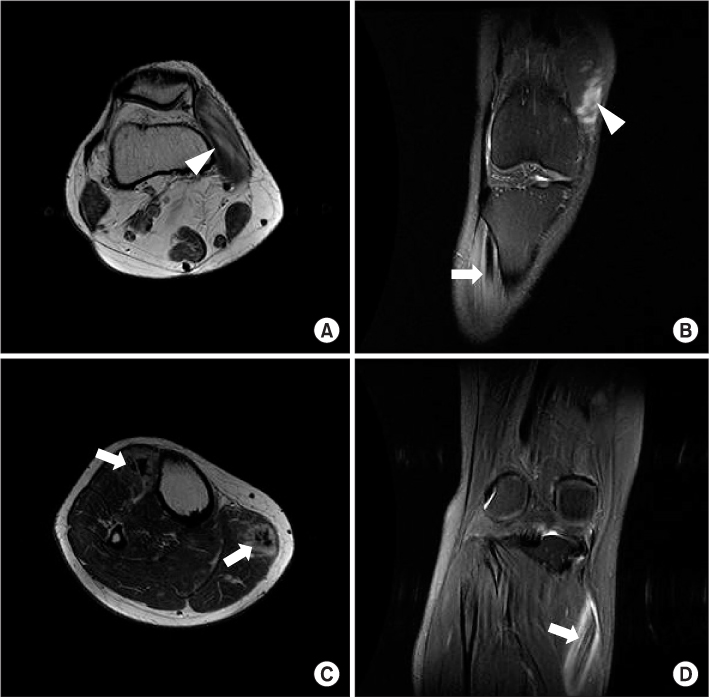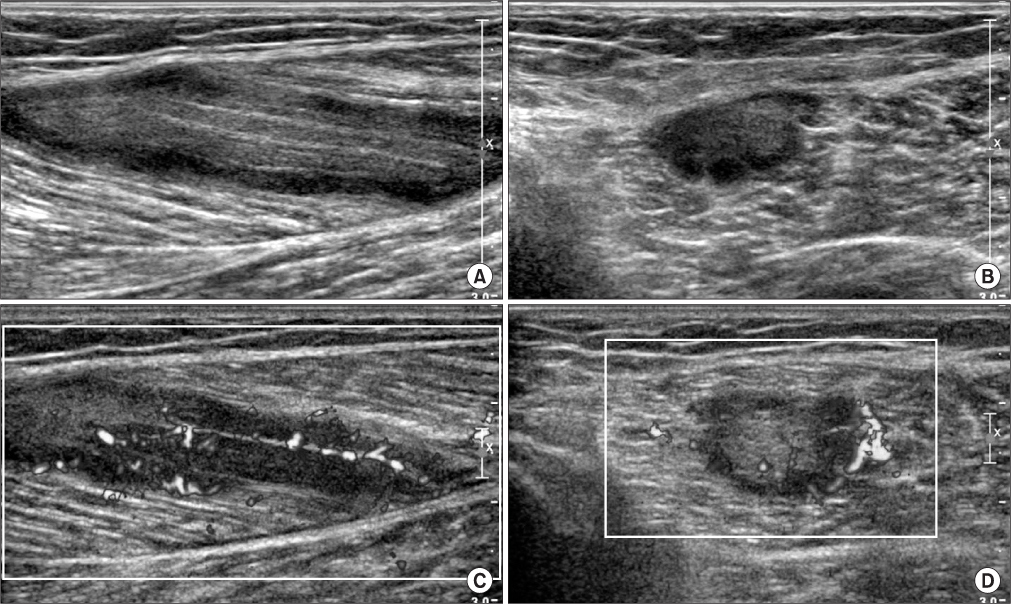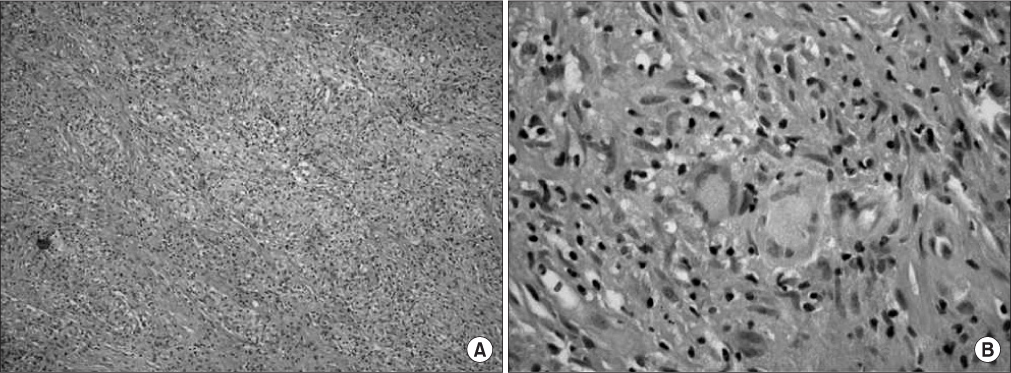J Korean Orthop Assoc.
2012 Aug;47(4):299-304. 10.4055/jkoa.2012.47.4.299.
Sarcoidosis Presenting as Knee Pain
- Affiliations
-
- 1Department of Orthopedic Surgery, Bucheon Hospital, Bucheon, Korea. hwangseokha@naver.com
- 2Department of Orthopedic Surgery, Seoul Hospital, Soon Chun Hyang University College of Medicine, Seoul, Korea.
- KMID: 2185378
- DOI: http://doi.org/10.4055/jkoa.2012.47.4.299
Abstract
- Sarcoidosis is a multisystem granulomatous disease of unknown etiology with variable manifestations, which may affect virtually any organ. Muscular sarcoidosis is a rare entity, and among this group of muscular lesions, the mass-like muscular sarcoidosis type is extremely rare. We reported a muscular sarcoidosis case that presented with right knee pain and described the clinical results with an added review of the relevant literature.
Keyword
MeSH Terms
Figure
Reference
-
1. Zisman DA, Biermann JS, Martinez FJ, Devaney KO, Lynch JP 3rd. Sarcoidosis presenting as a tumorlike muscular lesion. Case report and review of the literature. Medicine (Baltimore). 1999. 78:112–122.
Article2. Fayad F, Lioté F, Berenbaum F, Orcel P, Bardin T. Muscle involvement in sarcoidosis: a retrospective and followup studies. J Rheumatol. 2006. 33:98–103.3. Baughman RP, Lower EE, du Bois RM. Sarcoidosis. Lancet. 2003. 361:1111–1118.
Article4. Ogane K, Kato T, Mizushima I, Kawano M, Yamagishi M. A case of sarcoidosis developing as sarcoid myopathy concomitant with systemic sclerosis and review of the literature. Mod Rheumatol. 2012. 22:142–146.
Article5. Kolilekas L, Triantafillidou C, Manali E, Rontogianni D, Chatziioannou S, Papiris S. The many faces of sarcoidosis: asymptomatic muscle mass mimicking giant-cell tumor. Rheumatol Int. 2009. 29:1389–1390.
Article6. Otake S. Sarcoidosis involving skeletal muscle: imaging findings and relative value of imaging procedures. AJR Am J Roentgenol. 1994. 162:369–375.
Article7. Yamamoto T, Nagira K, Akisue T, et al. Aspiration biopsy of nodular sarcoidosis of the muscle. Diagn Cytopathol. 2002. 26:109–112.
Article8. Chen HH, Hsieh TY, Chen DY, Lan HHC, Hsieh CW. Sonographic features of nodular-type muscular sarcoidosis. J Med Ultrasound. 2007. 15:197–201.
Article9. Torralba KD, Quismorio FP Jr. Sarcoidosis and the rheumatologist. Curr Opin Rheumatol. 2009. 21:62–70.
Article10. Guis S, Mattéi JP, Lioté F. Drug-induced and toxic myopathies. Best Pract Res Clin Rheumatol. 2003. 17:877–907.
Article
- Full Text Links
- Actions
-
Cited
- CITED
-
- Close
- Share
- Similar articles
-
- Systemic Sarcoidosis Presenting with Arrhythmia
- A Case of Muscular Sarcoidosis diagnosed by Gallium-67 Scintigraphy and Magnetic Resonance Imaging
- Scar Sarcoidosis after Blepharoplasty: A Case Series
- Sarcoidosis Initially Presenting as a Nasal Cavity Mass Misdiagnosed as Tuberculosis
- Psoriasiform Sarcoidosis





